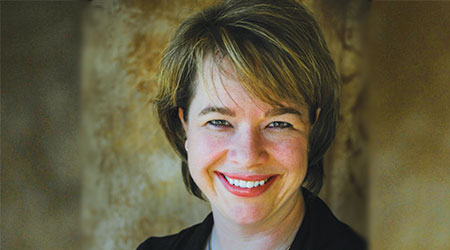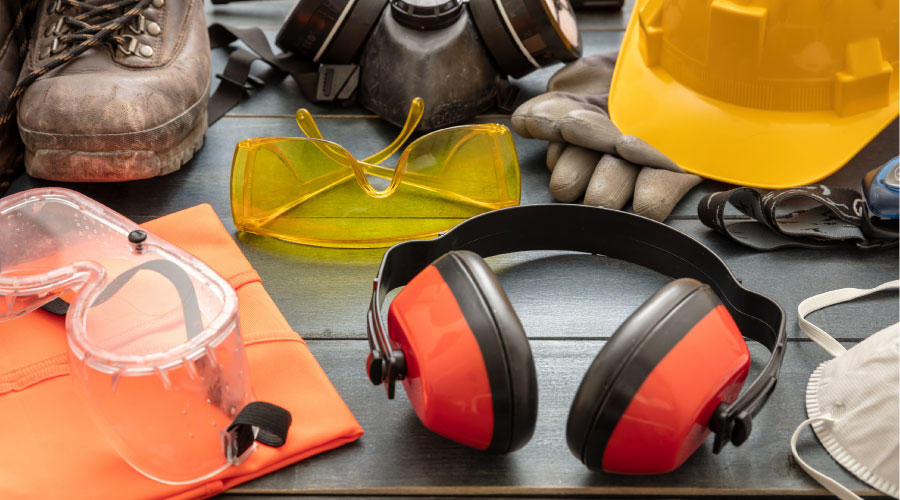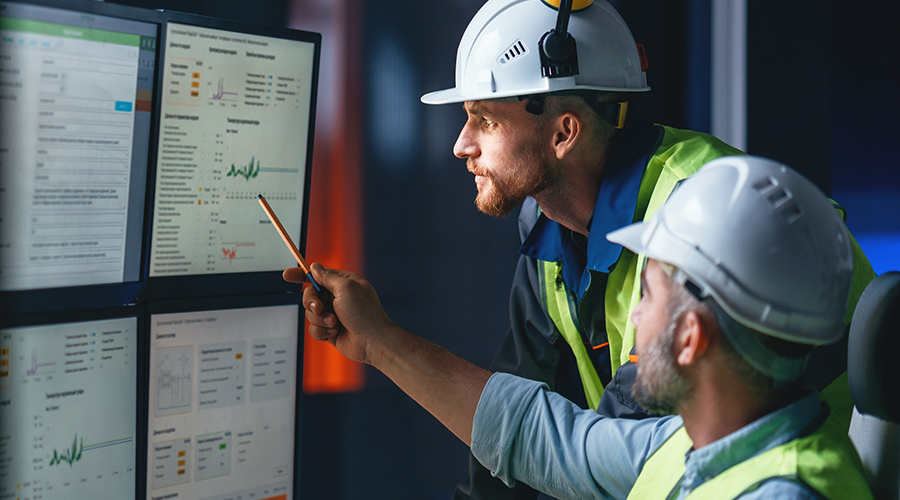 Laurie Gilmer, vice president and COO, Facility Engineering Associates
Laurie Gilmer, vice president and COO, Facility Engineering AssociatesFive Crucial Strategies for Healthier Workplaces
The coronavirus pandemic has shined a spotlight on why healthy buildings are important. Here are five of the most important best practices to consider.
By Laurie A. Gilmer, P.E.
More than a year after most institutional and commercial facilities largely shut down and many people began working from home, we are approaching a time when activities are re-opening. Vaccine distribution continues to expand, and infection rates have been dropping. Businesses and schools are in the process of expanding their occupancy levels in the coming months.
What will this mean for facility operations? Throughout the last year, maintenance and engineering have experienced a range of evolving conditions. Some facilities completely shut down, while others went to minimal or low occupancy levels. What almost universally changed was the way people interacted in the physical space: social distancing, wearing masks, washing hands more frequently per recommendations from the Centers for Disease Control and Prevention (CDC), and using hand sanitizer.
Each person bears an individual responsibility for these measures, while other measures are governed by individual organizations, such as taking temperatures and completing health questionnaires. Here, we’re most concerned with a third category: measures put in place for systems and equipment as facilities move toward more normal levels of occupancy.
1. More outside air
HVAC systems play a critical role in maintaining indoor environmental quality. In the past, this goal has primarily been related to temperature control and sometimes humidity. The pandemic has given managers a new perspective by highlighting the need to look at air quality in terms of health and in particular the importance of ventilation and air filtration.
It is not as if managers hadn't considered ventilation as a necessary part of building operations. It is that the perspective has changed. Instead of thinking of outside air as something to minimize and control to cut energy use, managers now need to think of it as a positive contributor to improved indoor air quality. In other words, outside air is good, and managers need to use it wisely.
Managers need to assess HVAC systems to ensure they can provide at least the minimum outside air required by code and by system design. If possible, they should consider increasing outside air above minimum levels as a mitigation strategy. The Building Readiness Guide from ASHRAE's Epidemic Task Force recommends that if managers pursue this strategy, they need to evaluate systems to ensure they can maintain space conditions without creating performance issues. Indoor spaces should not become too humid, too hot or too cold because managers increased the ventilation load so much that it outstrips HVAC system capacity.
2. Enhanced air filtration
The air filtration levels of most HVAC systems meet a minimum efficiency reporting value (MERV) of at least 6 or 8. Before the pandemic, these values were fairly typical except in specialty environments that required higher filtration levels.
The sustainability movement has long supported improved filtration levels. For example, the USGBC's LEED O+M: Existing Buildings program provides a point for installing ventilation system filters with a MERV rating of 13 or higher. Joseph Allen and John Macomber, authors of Healthy Buildings, also recommend filters meeting MERV 13 or higher for facilities located in a major city or areas of high pollution.
Since the pandemic started, building occupants and the general public have raised many questions about filters and their effectiveness in facilities. Should managers be installing better filters? Will doing so reduce the risk of exposure to the virus? This measure sounds like a good idea, but it's not as easy as simply swapping one filter type for another. The HVAC system actually has to be able to accommodate the better filter in size and pressure drop without damaging the system.
The Epidemic Task Force developed and published its Core Recommendations for Reducing Airborne Infectious Aerosol Exposure. On the question of improving filters, the task force essentially said, yes ... sort of. More specifically, its recommendation is to "use a combination of filters and air cleaners that achieve MERV 13 or better levels of performance for air recirculated by HVAC systems." That recommendation makes a great deal of sense. It is a layered approach to achieve an overall desired outcome and is much more practical to implement in existing buildings.
One note on ASHRAE: Its Building Readiness guidance assumes facilities will return to post-pandemic filtration levels — for many facilities, MERV 6 or 8 filters. The decision on whether to reduce filter ratings later is for managers to make. While they should consider practicality and product cost, they also need to consider the long-term health and productivity impact on building occupants and the organization.
3. Ultraviolet germicidal irradiation
Ultraviolet germicidal irradiation (UVGI) has been around for almost 150 years. Its popularity increased in the mid-20th Century when researchers found that it reduced the spread of airborne diseases in medical and classroom environments.
More recently, it has been used to improve air quality and keep cooling coils clean. While the technology can be effective against coronaviruses — including SARS-CoV-2, the virus that causes COVID-19 — the information is still evolving.
If managers decide to implement the technology, it should be part of a layered approach that includes air filtration. It is not a substitute for filtration. The proper design and installation of UVGI systems is critical to their effectiveness. ASHRAE offers several documents on UVGI, including articles and guidance documents.
Two very good design resources are ASHRAE's 2019 Application Handbook, chapter 62: Ultraviolet Air and Surface Treatment, and ASHRAE's 2016 Systems and Equipment Handbook, Chapter 17: Ultraviolet Lamp Systems.
4. Ionization technologies
Bi-polar ionization can be effective in reducing airborne contaminants. Since the start of the pandemic, I have noticed a sharp increase in inquiries from managers about it, specifically about needlepoint bi-polar ionization (NBPI). Ozone emissions are a key concern that managers should look at when considering any device, NBPI or otherwise. ASHRAE consulted the CDC on this topic and in its Building Readiness guidance provided the CDC’s response, which included the following statement:
“While bi-polar ionization has been around for decades, the technology has matured, and many of the earlier potential safety concerns are reportedly now resolved. If you are considering the acquisition of bi-polar ionization equipment, you will want to be sure that the equipment meets UL 2998 standard certification, Environmental Claim Validation Procedure (ECVP) for Zero Ozone Emissions from Air Cleaners, which is intended to validate that no harmful levels of ozone are produced.
“Relative to many other air cleaning or disinfection technologies, NBPI has a less-documented track record in regard to cleaning and disinfecting large and fast volumes of moving air within HVAC systems. This is not to imply that the technology doesn’t work as advertised, only that in the absence of an established body of evidence reflecting proven efficacy under as-used conditions, the technology is still considered by many to be an emerging technology.”
The bottom line is that NBPI might be effective. Managers considering adding it to a facility should research it as much as possible and understand it is still considered an emerging technology.
5. Testing and calibration
HVAC system testing and calibration are two of the most important measures managers can implement. Systems operating under normal conditions can fall out of calibration or experience performance issues. For buildings that have been minimally occupied or not occupied at all, now is an important time to test building systems to make sure they operate as intended – before occupancy levels increase.
Technicians should check systems for leaks, odd sounds, signs of overheating, and accumulated dirt and grime. They also should check operational setpoints and sequences of operation to see if the systems are operating as they should. Again, ASHRAE's Building Readiness guidance is a good resource with checklists for HVAC systems.
Another good resource is the International Facility Management Association's Re-Entering the Workplace Strategic Framework. While it does not get into the specifics of individual pieces of equipment as ASHRAE's guide does, it provides an overarching framework under which these facility systems fall.
The pandemic has challenged managers and their organizations in ways they could not have predicted. Managers now have a much better understanding of the critical role building systems play in the health of occupants and their role as facility professionals in actively working to reduce risk through operations and maintenance activities.
Laurie Gilmer is vice president and chief operating officer of Facility Engineering Associates — www.feapc.com. She is the first vice chair of IFMA’s board of directors, serves as IFMA's liaison to ASHRAE's Epidemic Task Force, and serves on the National Visiting Committee of Building Efficiency for a Sustainable Tomorrow (BEST) Center.
Related Topics:












